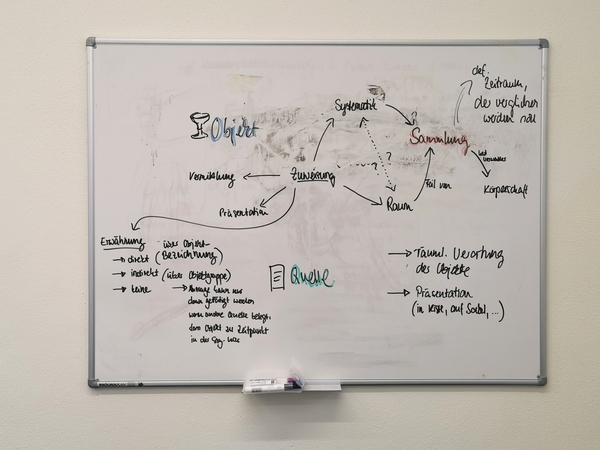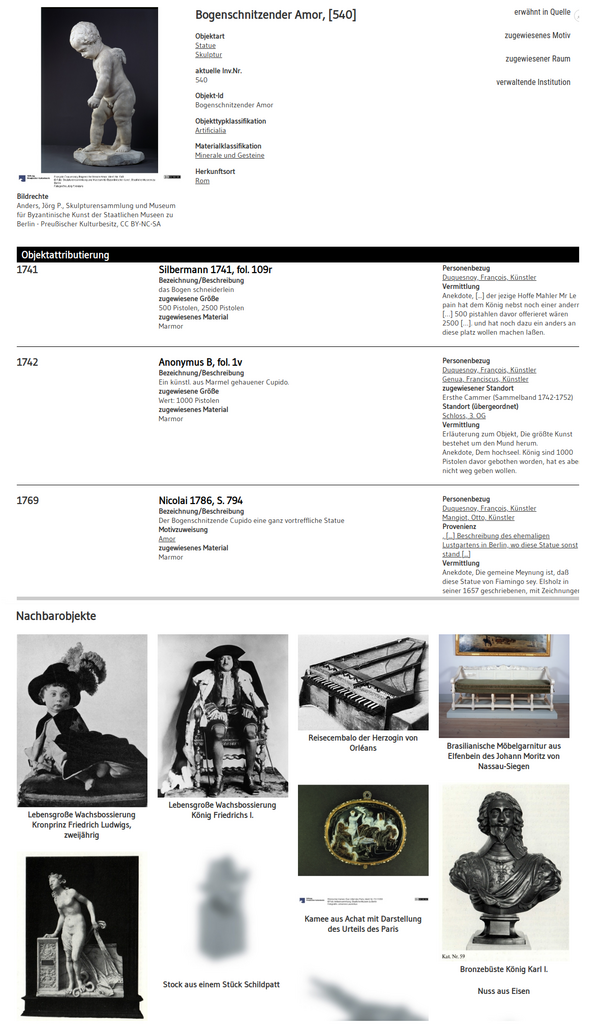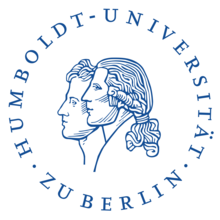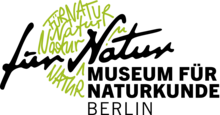General Information
This virtual research environment translates the Berlin Kunstkammer into a digital knowledge graph that connects objects, actors, places, and sources. It is based on a wide range of different sources (including inventories, travel reports, and descriptions) which, in combination, provide a multiperspectival view of the collection and its development.
Numerous Kunstkammer objects have survived in the collections of the Staatliche Museen zu Berlin or have been integrated into the holdings of the Museum für Naturkunde Berlin; others are now in the collection of the Humboldt-Universität zu Berlin. Many of the objects, however, live on only in historical sources; thus the research environment focuses on a text-based reconstruction of the holdings that enables users to investigate the objects digitally and by time period. In addition to an overview of the most important sources related to the Brandenburg-Prussian Kunstkammer and its predecessor and successor institutions, the research environment provides access to selected sources with transcriptions (working drafts), digitization, and detailed object information.
Sensitive Content
This research environment contains resources with inappropriate terms and descriptions from historical sources that contain racist, discriminatory and harmful language. The project seeks to make this historical dimension of the collections visible and to critically engage with it. The staff of the project dissociates itself from this use of language and the views reflected in the presented materials and sources.
Technical Architecture
The uniqueness of the virtual Berlin Kunstkammer lies in the way it describes, integrates, and maps knowledge. The environment is based on Semantic Web technologies, which add a semantic dimension to the functionalities of the World Wide Web. The goal is not only to structure and connect knowledge, but also to improve its usability and shareability. The basic framework of the virtual Berlin Kunstkammer is the research and documentation environment WissKI, which is oriented towards the web-based cataloguing, research, and publication of cultural heritage. The topology of the virtual Berlin Kunstkammer is defined by an underlying data model that translates the subject of study and the research questions into a knowledge graph. Central to the study of this historical collection are the paths and changing meanings of the objects as well as the accompanying effects on the constellation and dynamics of the holdings, with consideration also given to the historical nature of the sources and the associated ambiguity and incompleteness of information. Furthermore, attention to all of these aspects goes hand in hand with the potential for expanding the content on the basis of the extensive archival material that has survived over the centuries, despite losses due to war.
A knowledge graph of this kind seeks to map subject area information that is formally described using “ontologies,” a term that, in information science, refers to a set of concepts and the relationships between them. An application ontology based on the CIDOC Conceptual Reference Model (CRM) and its OWL implementation was created for and used in this project. This ontology consists of around ninety classes (e.g. “physical object”, “actor”, “place”, “time span”) and 150 properties (e.g. “has title“, “took place at”, “was created by”), whose respective meanings are precisely defined. The ontology is being further developed by humanities scholars and computer scientists and serves as a lingua franca for transdisciplinary research. Through the formation of class–property–class chains, sentences are constructed that can be interpreted by humans and machines alike. If all the sentences related to an observed subject area are combined within the context of specific questions, a graph-based data model or knowledge network emerges that is tailored to the application area. Furthermore, as an event-centric ontology, the CIDOC CRM makes it possible to use a variety of events (e.g. birth, production, attribution) to represent conditions and their transformation. In turn, these events can be linked to actors, times, and places via the corresponding relations, and the transformations of conditions can be contextualized. As a result, the ontology is an ideal framework for the source-based reconstruction of historical collections.
How to Search
The research environment is centered around the textual sources for the Berlin Kunstkammer and the information they provide on objects from the collection. Sources [Quellen] and Objects [Objekte] can be researched using separate search functions. The following two options are available:
1. Full-text search using the gray search bar. The red dot indicates whether objects or sources will be searched, using one or several keywords. Exact word combinations must be placed in quotation marks (e.g. “graphic depiction”).
![]()
2. Search (Objects) [Suche (Objekte)] and Search (Sources) [Suche (Quellen)] using the menu ![]()
In addition to the full-text search in Search (Objects) [Suche (Objekte)] and Search (Sources) [Suche (Quellen)], there are two levels of filters. The filters for Object Types [Objekttypen], Material Classification [Materialklassifikation], and Date [Datierung], or for Type of Source [Art der Quelle], Phase/Collection [Phase/Sammlung], and Date [Datierung] are displayed on the primary screen. Additional filters are available under Expert Search [Expertensuche].
![]()
Full-text search and filters can be combined. First the full-text keyword search is executed; then the desired filters can be applied to the search results.
Object Search
All objects mentioned in the sources are shown here. The full-text search accesses the wording of the sources as well as a standardized vocabulary associated with the objects.
The filter functions are tailored to information taken directly from the sources. To maintain the focus of the research project, this information reflects the historical dimension of the collection. Accordingly, results may contradict current descriptions on, and interpretations of, the objects.
Filter Level 1: Object Types, Material Classification, and Date
- Object Type [Objekttyp]: references five historical collection categories: artificialia, memorabilia, mirabilia and curiosa, naturalia, and scientifica. Please note that the selection of a particular object type directly affects the results obtained under Object Class in Expert Search.
- Material Classification [Materialklassifikation]: references standardized material categories for objects such as metal, textiles, or plant material. Please note that the selection directly affects the results obtained under Material in Expert Search.
- Date [Datierung]: filters objects according to dates mentioned in the sources, such as date of production or date of acquisition by the Kunstkammer.
Filter Level 2: Expert Search
- Source [Quelle]: accesses a selected (textual) source.
- Object Class [Objektart]: filters objects according to selected categories.
- Material: filters objects according to selected materials.
- Actor Relations [Personenbezüge]: filters objects according to associated actors (i.e., persons).
- Motifs and Analogies [Motive und Analogien]: filters objects according to depicted motifs as well as things they resemble.
- Presentation [Präsentation]: filters objects according to their mode of presentation in the Kunstkammer.
- Cultural Practices [Kulturelle Praktiken]: filters according to selected communication practices, usage, and perception of objects as well as anecdotes and explanations.
- Phase/Collection [Phase/Sammlung]: accesses time periods and locations in the history of the Kunstkammer.
- Collection Systematics [Sammlungssystematik]: filters objects according to selected modes of organization in the collection.
- Schlüter Building Rooms [Räume Schlüterbau]: accesses the four rooms of the Kunstkammer in the Berlin Palace between ca. 1700 and 1800.
- Place of Origin [Herkunftsort]: filters objects according to selected places of origin.
- Type of Acquisition [Zugangsart]: filters objects according to the type of acquisition by the Kunstkammer or other collections.
- Receiving Institution (historical) [empfangende Institution (historisch)]: displays objects from the Berlin Kunstkammer that were transferred to other institutions.
- Current Keeper [verwaltende Institution]: filters surviving objects according to the institution in which they are currently housed.
Source Search
All catalogued (textual) sources are displayed here. The full-text search accesses the contents of all available transcriptions.
Filter Level 1:
- Type of Source [Art der Quelle]: filters according to type of source such as inventory, travel report, or database.
- Phase/Collection [Phase/Sammlung]: filters sources according to time periods and locations in the history of the Kunstkammer.
- Date [Datierung]: filters sources according to the date of their composition or revision.
Filter Level 2: Expert Search:
- Source [Quelle]: hides individual pages and shows only the superordinate title of the source.
- Author/Reviser [Autor/Überarbeiter]: filters sources according to author or reviser.
- Actor Relation [Personenbezug]: filters sources according to selected persons.
- Collection Systematics [Sammlungssystematik]: filters sources according to the selected organization of the collection.
- Current Keeper [verwaltende Institution]: filters sources according to the institution in which they are housed or through which they are available.
![]() Menu
Menu
The menu provides access to further information associated with the Kunstkammer and its holdings:
- Sources [Quellen]: Overview of the most important sources for the Berlin Kunstkammer.
- Actors [Personen]: Actors (i.e., persons) in the history of the Kunstkammer (with GND number as applicable).
- Events [Ereignisse]: Periods of reign or administrative tenures of specific persons, as well as exhibitions.
- Object Classes [Objektarten]: Thesaurus of object classes (created for the research project and augmented with standard data).
- Materials [Materialien]: Materials mentioned in the sources (linked with Getty-AAT as applicable).
- Motifs [Motive]: Motifs and themes depicted on objects (linked with Iconclass as applicable).
- Institutions [Körperschaften]: Museums, archives, libraries, and collections that administer Kunstkammer objects and sources.
- Places of Origin [Herkunftsorte]: Map of selected georeferenced places of origin.
Documentation and Download
The export of the graph database repository with the research data, the CIDOC-CRM based application ontology and the WissKI Pathbuilder template (data model) are available at https://zenodo.org/records/13859950 until the service is available again at https://doi.org/10.7479/9675-dy20.
Development and Content
Humboldt-Universität zu Berlin, Hermann von Helmholtz-Zentrum für Kulturtechnik
Dr. Sarah Wagner (conception and implementation of data model, data collection, text)
Dr. Marcus Becker (text, editing)
Rosa Miriam Reinhardt, M.A. (data collection)
Michael Willenbücher, M.A. (consulting, operation)
Museum für Naturkunde Berlin
Dr. Diana Stört (content conception, text, editing)
Dr. des. Meike Knittel (content conception, data collection, text)
Falko Glöckler (Museum für Naturkunde Berlin) (consulting)
Dr. Sabine von Mering (Museum für Naturkunde Berlin) (long-term archiving and provision)
Transcription Workshop
Staatliche Museen zu Berlin
Prof. Dr. Andreas Bienert (Staatliche Museen zu Berlin) (consulting)
Other
Dipl.-Designerin Claudia Bachmann (web design)
Sebastian Delius (enlightenment* – Agency for Kulturtechnik) (implementation of web design, web development)
Dipl.-Inf. Mark Fichtner (Germanisches Nationalmuseum) (consulting, web development)
Melissa Thorson (Translation)





